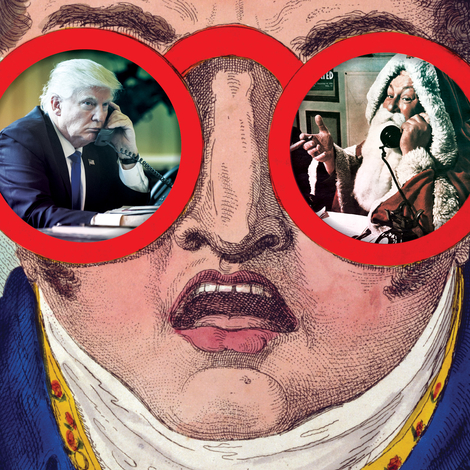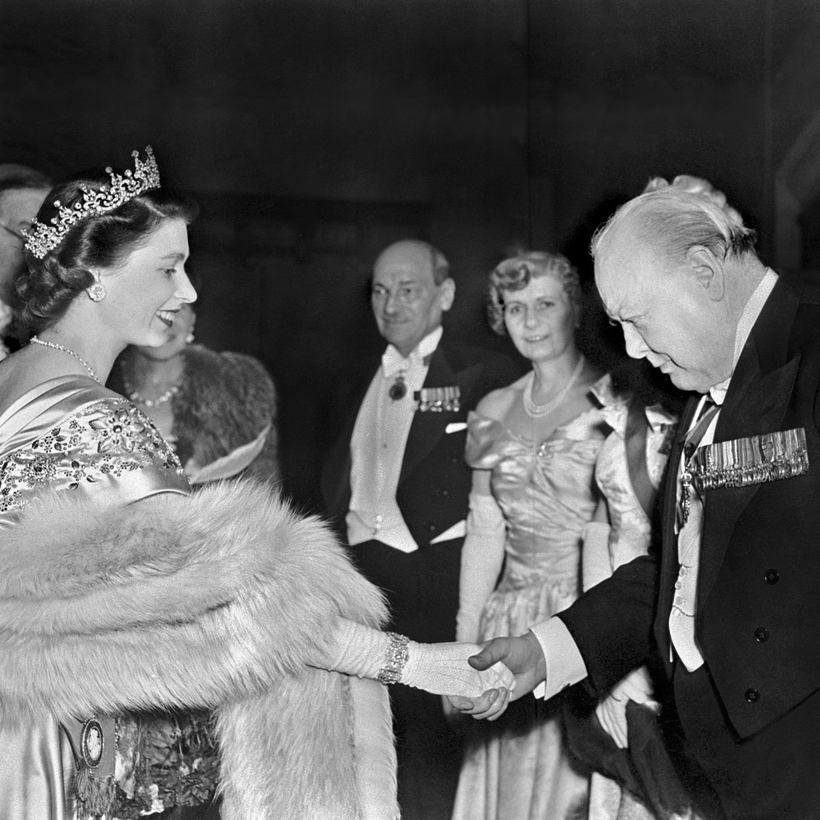On May 8, 1945, Londoners celebrating V-E Day gathered outside Buckingham Palace, hoping to see the royal family. The royals duly obliged, appearing on the balcony that afternoon. Smack in the middle, however, was an interloper—Prime Minister Winston Churchill, smoking his trademark cigar. The scene was symbolic of how Churchill had wormed his way in among the Windsors. As Andrew Morton writes, he had become “almost as much a symbol of constitutional monarchy as the … monarch.”
Morton is a journalist with a taste for sensation. He’s previously written blockbuster biographies, most notoriously of Princess Diana. Here he takes on a weightier topic, namely Britain during a turbulent time of war and royal scandal. He responds admirably to the weight of responsibility; this is a surprisingly sober book. It nevertheless seems to have been written for those in awe of both Winston and the Windsors.

Monarchy is a strange beast that does not bear critical examination. Rather mediocre and emotionally unstable individuals are given power simply by accident of birth. A good king or queen is quite rare. (That said, democratic republics do not always elect stable geniuses.) Churchill understood the flaws of monarchy but never really questioned its legitimacy. He was, as Morton describes, “a dewy-eyed monarchist,” easily intoxicated by majesty. “In his eyes the monarchy could not be tarnished … by the behaviour of individual office holders.”
That’s perhaps fortunate, given that Churchill had his fair share of mediocre monarchs. The first was Edward VII, who reigned from 1901 to 1910. He was a notorious philanderer who probably bedded Churchill’s mother, Jennie. Suspicious of Churchill’s progressive politics, he doggedly undermined liberal reforms. Edward, perhaps rightly, found Churchill’s ambition vulgar but was eventually won over by what Morton calls his “unctuous flattery.”
George V reigned until 1936. Whereas Edward was fun, George was boring, an unfortunate characteristic in wartime, when kings should inspire. He was, technically speaking, the first actual Windsor, a name adopted in 1917 to camouflage the family’s German roots. George had a fractious relationship with Churchill, dependent upon his expertise but always suspicious of his motives. “The King,” writes Morton, “found Churchill energetic but bumptious, careless of protocol, irreverent towards authority, and dismissive of the contributions of others.” That’s Churchill to a tee.
Next came Edward VIII, the Fascist sympathizer and wannabe dictator. Churchill, who supervised his political education, knew him well but was oblivious to his faults. He hoped that he would become a new version of Edward VII—in other words, another playboy to put pizzazz back into the monarchy. That seemed the direction he was headed, until he came under the spell of Wallis Simpson, the twice-divorced American whom he was determined to wed, despite constitutional obstacles. Churchill, always willing to excuse Edward’s manifold deficiencies, found himself on the wrong side during the abdication crisis of 1936 and nearly destroyed his career as a result.
Edward gave way to another boring George, a man who seemed ill-suited to the role of King. Churchill, whose career was miraculously revived in 1940, when Britain found herself in need of a genuine war leader, made George VI into a better monarch than he might otherwise have been. Their wartime relationship was symbiotic: George providing solidity; Churchill, flamboyant inspiration. Churchill was, writes Morton, “at once an adviser, a brother-in-arms, a boon companion and a father figure.”

Elizabeth II, who became Queen after her father’s death, in 1952, should perhaps have undermined Churchill’s unflinching faith in monarchy, given her gender. An inveterate misogynist, Churchill had a disdain for women that apparently did not extend to Queens. He nevertheless assumed a rather condescending tone, seeing himself as her tutor in a world she was ill-equipped to understand. That assumption did not, however, survive long past their first formal meeting, when she demonstrated both intellect and fortitude. Churchill then fell hopelessly in love. For her part, he was the favorite of her 15 prime ministers, a man who was “always such fun.”
The Victorian prime minister Benjamin Disraeli once remarked that “everyone likes flattery; and when it comes to Royalty you should lay it on with a trowel.” Churchill had a very large trowel; George VI, in fact, once asked him to dial back on the flummery. A master manipulator, Churchill used sweet words to ride roughshod over constitutional protocol. He dominated his monarchs by smothering them in sycophancy.
Morton isn’t a particularly good writer, nor is he a skilled historian. He nevertheless knows precisely how to write for his presumed readership. This is a benign book that will ruffle few feathers. It will delight those inclined to worship both Churchill and the Windsors—admittedly a large group. The analysis is thin and the knowledge shallow, but the book consistently entertains. At one point, Morton remarks that Churchill “crafted a version of history with blurred contours and softened edges.” That, likewise, perfectly describes this book.
Gerard DeGroot is Emeritus Professor of Modern History at the University of St. Andrews and the author of several books, including The Sixties Unplugged


